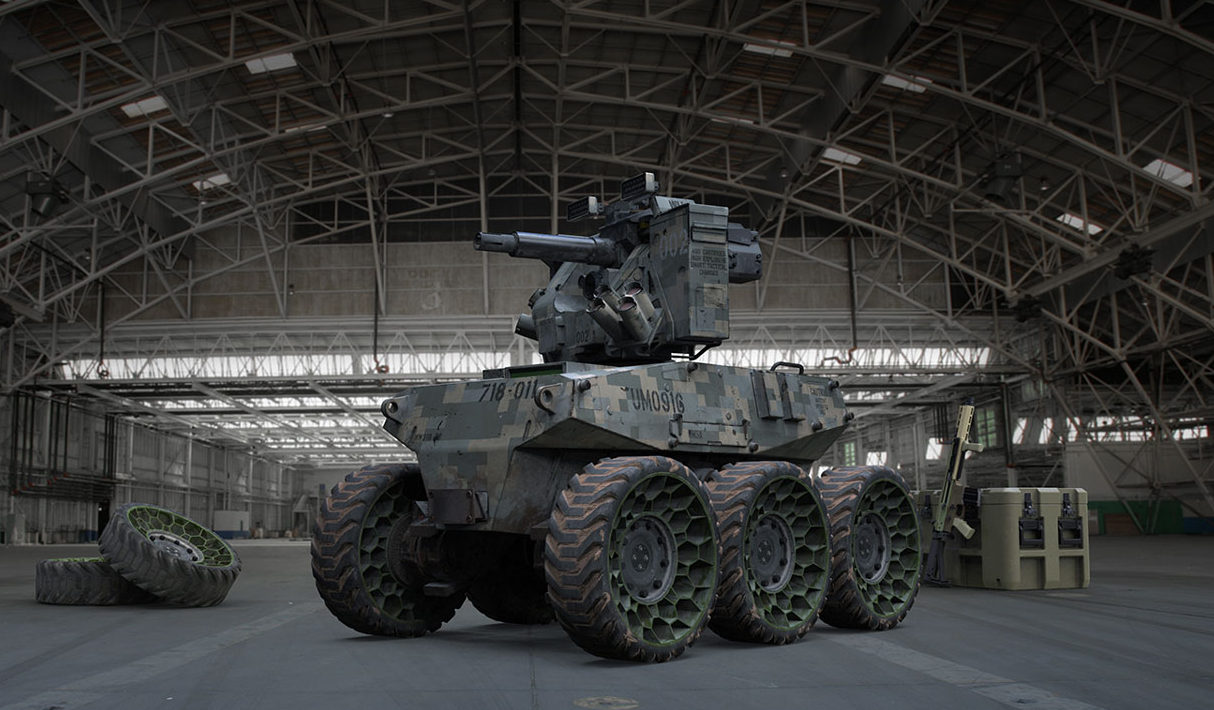In December 1918, General Sir Douglas Haig wrote that tanks “are incapable of effective independent action. They do not in themselves possess the power to obtain a decision.” Doctrine relegated rapidly maturing armour to a limited support role. Despite promising interwar exercises, this attitude persisted into the Second World War. Britain, the earliest adopter of armoured warfare, proved one of the slowest to harness its full potential.
Without new effort, a similar fate may meet the automated systems of the United States and its allies such as Australia. The West has led the world in unmanned combat vehicles for twenty years. However, while research and development continue apace, rhetoric and doctrine has calcified. Major powers are conceptualising of automation as an augment and support to existing force structures – not exploring how it might change the character of war. This is a mistake.
By 2040, automated systems will have turned the battlefield into a lethal panopticon. Attrition will be re-imposed. Manouevre warfare as it is understood today will be as effective as cavalry charges at the Somme.
This is due to the unique attributes of automated systems. They are easier than humans to sustain in the field – requiring only fuel and ammunition. They do not get scared, cold, or tired. They will not become demoralised or run away. These capabilities have been recognised and make automated systems a go-to for “dull, dirty, or dangerous” missions. This overlooks their broader ability to comprehensively deny large areas to the enemy through distributed deployment to concealed positions across a wide area.
Changing Character
Standard NATO defensive doctrine involves blunting an attacking force with a series of ambushes, culminating in a decisive battle around the main line of resistance. In contrast, an automated army would spread out platforms widely over an area, linked together into a network by laser communications and low-flying drones. The intent would be to put a camera behind every blade of grass and a missile behind every ridgeline.
The enemy would be allowed to enter this area with limited resistance. Once they are committed, the automated platforms would be activated. Previously assumed safe rear areas would become centres of armed resistance. Any effort to move forces behind the frontline would be interdicted, dramatically slowing the enemy pace of operations and attriting their formations. Moreover, the automated systems would be mobile and collaborative, able to swarm together to attack strongpoints and disperse to evade detection. They could conceivably operate 24/7, sustainment needs met by a network of low-profile LOGBOTS.
This scenario would impose a challenging tactical choice on the enemy commander. Pressing on to achieve their objectives would leave them entirely cut off. Diverting to clear the automated systems would be very costly in time and manpower. Attempting a middle way of securing key infrastructure while still moving ahead with the bulk of the force would render them highly vulnerable to conventional interdiction.
Even without the element of surprise, the challenge remains daunting. Automated systems cannot be manoeuvred to death– surrounding them has no impact on morale, or command and control.
Sustainment via LOGBOT is highly distributed; there are no depots to overrun and, of course, the attempt to punch through the automated zone would leave the force stranded and attrited, with their own sustainment cut off. A more gradual and attritional approach, sweeping through the zone and destroying automated systems would be costly in time, blood, and treasure– as well as rendering them vulnerable to a conventional counterattack. Moreover, most armies will struggle to generate sufficient mass to comprehensively clear an area and hold it against re-infiltration.
How then to attack into a distributed, automated defence? The answer is your own automated army pursuing an attritional approach. Unlike a conventional formation, automated platforms can be deployed in sufficient mass, and take the necessary casualties, to clear an area of hostile systems. This would likely be a painstaking, erosive process– both sides attempting to remain as stealthy as possible to avoid targeting and destruction by the enemy panopticon. A vehicle taking three days to move one hundred metres, rather one hundred miles, might be the norm.
Taking Action
This is one sketch of the potential future operating environment shaped by the proliferation of automated systems. As part of the Robotics and Autonomous Systems (RAS) 2040 review, the ADF should run extensive speculative wargames to explore the impact of automated systems on future doctrine under different conditions and assumptions. Wargaming is a powerful tool for testing novel capabilities because it allows free-form exploration and problem solving from numerous people. Cooperating with a wide range of military and civilian stakeholders, possibly through open-access or modified commercial platforms would give the greatest range of views while maintaining central control over technical parameters.
Most people would not have looked at the slow, sputtering, overheating Whippet tank and suggested it would transform the face of battle. Twenty years later, they were proven spectacularly wrong. As part of the RAS 2040 review, the ADF should consider not only the immediate technical uses of automated systems, but their longer-term impact on core assumptions of doctrine. To do otherwise risks missing a potential revolution in military affairs– one which Australia’s adversaries will be sure to exploit.
About the Author: Matthew Ader is an undergraduate student at King’s College London in the Department of War Studies. He is an editor at Wavell Room, and tweets from @AderMatthew.

